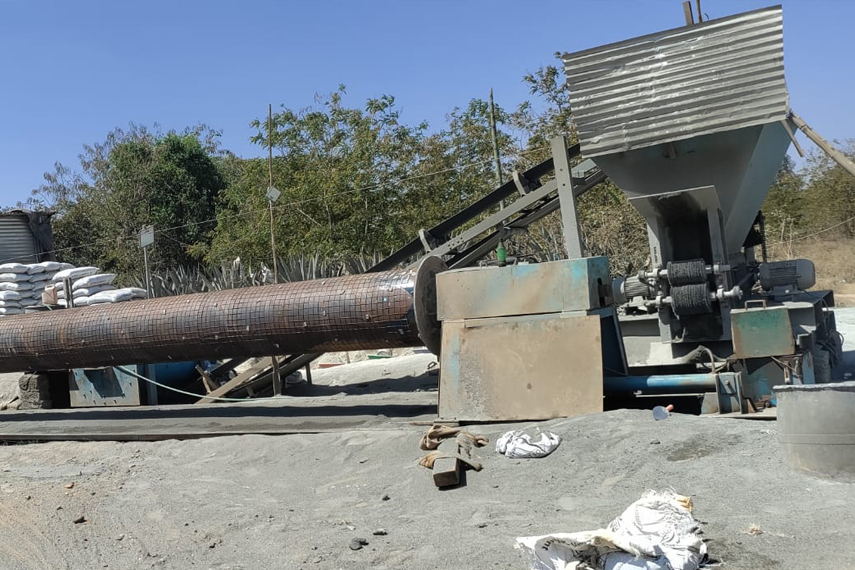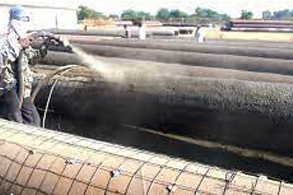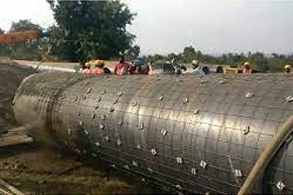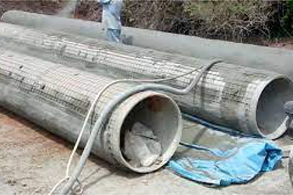The process of coating an extra layer with concrete mixture to improve the life of MS pipe, Gunneting is an effective technique, which has been extensively used in the rehabilitation of structurally distressed Reinforced Concrete members. We use this technique to strengthen the pipe structure with outside coating. sand and cement are mixed dry in a mixing chamber, and the dry mixture is then transferred by air pressure along a pipe or hose to a nozzle, where it is forcibly projected on to the surface to be coated.
Cement Mortar
Cement mortar linings provide long-term protection at a low cost, and remain one of the standard linings for potable water pipes.
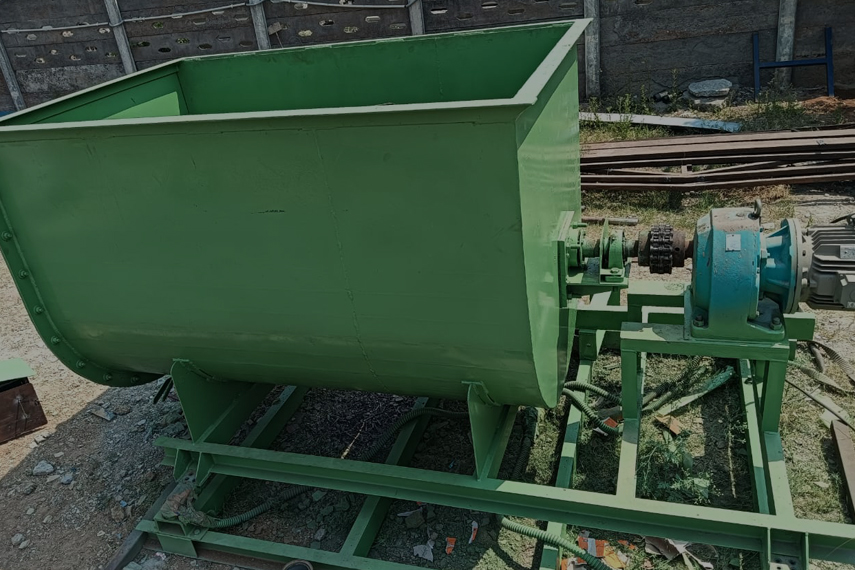
A major benefit with cement mortar is the ease of application. The mixing and application of mortar is straight forward, leading to low risks in application. Cement mortar linings provide active protection of the steel pipe by creating a stable hydroxide film at the steel-mortar interface. The corrosion protection is referred to as active, because it provides protection even where there are discontinuities in the lining. Cement mortar linings have a track record of conveying water for extended periods to required water quality standards, and currently meets all applicable standards throughout the world. Cement mortar does not support microbiological growth.
The actual cement application of cement-mortar linings is performed by pumping or pouring a high slump cement mixture onto a slowly rotating length of pipe. The rotating speed is then increased, creating centrifugal forces that level out the wet mortar to a uniform thickness. Continued spinning removes the excess water and compacts the mixture to a dense and solid surface. After the spinning process, the lining is cured either by moist air at ambient temperature or by an accelerated process using steam. Like concrete, cement-mortar linings can develop drying cracks, but these cracks will self-heal when the lining is wet. Wetting the cement lining also causes the lining to swell, which increases strength and adherence. Cement-mortar linings can add significant stiffness for resistance to deflection forces. The strength of the mortar lining may be added to the strength of the steel when calculating stiffness.
Soft, aggressive waters, as well as prolonged contact with heavily chlorinated water, may be detrimental to cement-mortar linings. Cement-mortar linings perform best when flow velocity is 20 feet per second or less. In situations where the conveyed water is aggressive and the flow rate is low (resulting in a long residence time), a high pH can develop with cement mortar lined pipe. Cement-mortar linings add considerable weight and reduce the available flow volume of a transmission pipe.

